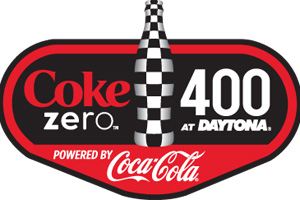UNDERSTANDING ELECTRONIC FUEL INJECTION: WHAT YOU NEED TO KNOW ABOUT THE CHANGE TO ELECTRONIC FUEL INJECTION SYSTEMS ON NASCAR SPRINT CUP SERIES CARS IN 2012
AUBURN HILLS, Mich., (Saturday, June 2, 2011) Since 1949, NASCAR has used carburetors as part of its primary fueling system within all of its stock car racing platforms. Earlier this season, the sanctioning body announced the change to develop and integrate electronic fuel injection (EFI) systems into the NASCAR Sprint Cup Series for competition rollout starting with the 2012 season. Implementation of EFI is a dramatic move that transfers highly specific stock car technology to more relevant and current fueling systems seen on modern day passenger vehicles that is uniformly supported by Dodge and participating auto manufacturers. On Thursday, July 7, NASCAR will be conducting an open test for Sprint Cup Series competitors at Kentucky Motor Speedway in advance of next weekend’s Sprint Cup event. As part of this open test, teams will be allowed to conduct their first on-track track test of EFI.
A single Penske Racing Dodge Charger R/T will be participating in EFI testing. Dodge Motorsports Engine Engineer Pat Baer breaks down the important technical facts behind NASCAR’s move to EFI.
Question and Answer:
Q: WHAT IS ELECTRONIC FUEL INJECTION?
A: Until now, NASCAR Sprint Cup engines have all used a carburetor to mix air and fuel that enters into the intake manifold and that mixture eventually gets drawn into the cylinders to burn. The carburetor is a simple mechanical device that’s been reliable, if not very accurate, in it’s delivery of the mixture of air and fuel to the engine and Sprint Cup teams have spent decades developing it to be an effective tool. So, what’s fuel injection? A fuel injection system is made up of a throttle that lets only air into the intake manifold and then eight electronically controlled “fuel injectors,” that are placed in the intake manifold very close to each cylinder, to provide the fuel. The system works when the throttle opens and lets air into the intake manifold and then each of the eight “fuel injectors” inject an electronically measured pulse of fuel into the airstream just as it’s going into each individual cylinder. An onboard computer uses input from sensors that are placed all over the engine to calculate exactly how much fuel to add to the air flow just as it’s entering the cylinder, which means a much more accurate and efficient fuel delivery system.
Q: HOW DOES EFI DIFFER FROM CARBURATION ON A CUP SERIES CAR?
A: EFI is a high-pressure system that regulates and atomizes fuel into each cylinder. Carburetors utilize a mechanical linkage to control a valve that allows more air to enter into the engine from one common source. As more air is entered into the engine, more fuel is drawn into the intake airstream and down into the combustion chambers.
Q: IS EFI MORE EXPENSIVE?
A: Yes. An EFI system will cost more than a carbureted system. Final costs have not been established yet.
Q: WHAT IS THE MAJOR BENEFIT OF SWITCHING TO EFI?
A: Better control of the fuel is the major benefit. When the fuel is mixed with air in a carburetor, it basically just enters the intake manifold as a fuel/air haze. With cars circling the track and making constant left hand turns, that haze is thrown to the right side of the intake manifold that tends to starve left side engine cylinders of fuel and tends to flood right side cylinders with fuel. Eight injectors, one for each cylinder, can be adjusted electronically to each cylinder’s need to assure that it gets the optimum amount of fuel under all conditions. Electronically controlling “when” the fuel flows also eliminates the problem we see now of flames out the exhaust pipes caused by wasted fuel. The fuel/air haze in the carbureted manifold today continue to pass through the cylinders even after the driver lifts off the throttle and then get wastefully burned in the hot exhaust system. With electronically controlled fuel injection, when the driver lifts off the throttle the fuel stops flowing instantly.
Q: WHAT IMPACT WILL IT HAVE ON NASCAR SPRINT CUP SERIES RACING?
A: NASCAR has established very specific rules for the manufacturers and race teams in order to keep a level playing field. NASCAR has established common suppliers and each manufacturer will be using the identical EFI components such as fuel injectors. We expect very little change from the vantage point of our fans, but the manufacturers and teams will continue to look for engine power increases with the new fuel delivery system.
Q: WILL THERE BE A MAJOR DIFFERENCE IN ENGINE PERFORMANCE?
A: No. Initially, the EFI engines will make about the same horsepower as the carbureted engines, perhaps a few horsepower less. The current Holley 830 carburetor built within NASCAR’s rules and specifications are very good and have been optimized over many years of development. It will take a little more time for EFI systems to increase power.
Q: HOW HAVE DODGE ENGINEERS PREPARED FOR THE IMPLEMENTATION OF EFI?
A: Almost all of the engineers that work in Dodge Motorsports had previous production car jobs and we are well versed in developing engines with EFI. In addition, Penske Racing is bringing extensive race car EFI experience to this NASCAR initiative. Technically speaking, the main difference is that the NASCAR race vehicle is subjected to many different operating conditions than production cars, so we are focusing on those differences to ensure the new system is robust. We are looking forward to testing and implementing EFI at the race track.









